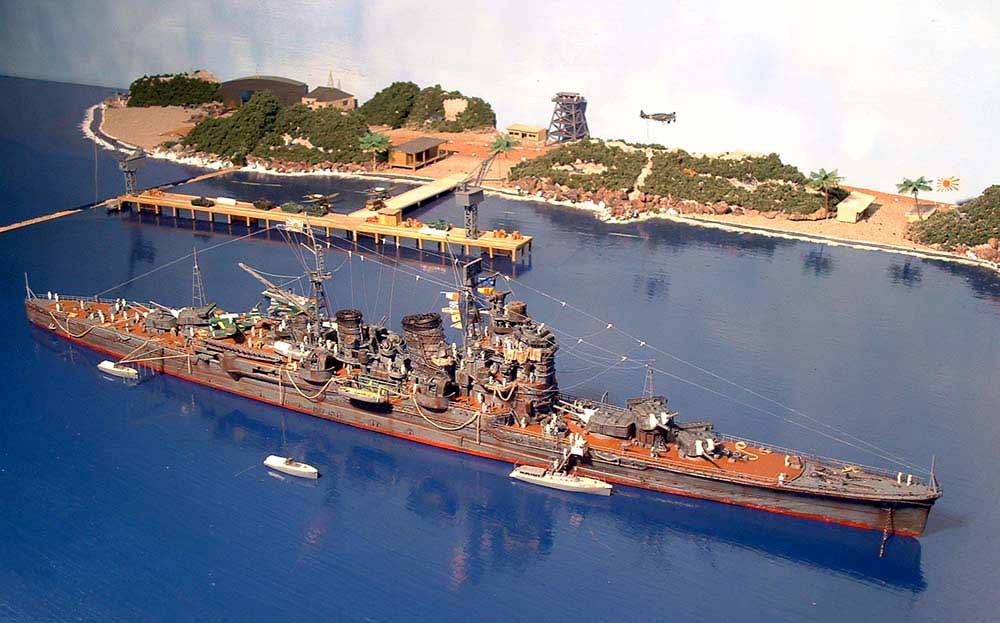by Kym Knight

1/350 IJN Myoko, Late 1944 (Aoshima)

This kit is another major improvement over the earlier cruiser releases from Aoshima with parts fit and detail clearly getting the treatment. My only complaint is the manufacturers feeble attempt at a photo-etch set for her, truly dismal, but between Lion Roar, KA Models, Voyager and my spare parts box, I was able to put together what I wanted. I really hope when Aoshima release my favourite battleship in the near future, they borrow Hasegawa's P/E designer for the job. As I wanted to have a 1944 version of her, it was a simple task of scratch-buiolding the twin 25 AA gun emplacement mounted on the back of the crane superstructure, adding the 4 triple 25's gun tubs fore and aft and adding the many single 25's placed aroung her decks. A word for anybody wanting to update it to this time period, Aoshima include 4 gun tubs (though a bit smaller than they should be) on one of the kits frets. I didn't realize this until I had finished and noticed the leftovers.
I depicted Myoko looking pretty dirty and worn as immediately after leaving her last refit at the end of June 44', she covered many miles transporting oil, stores and troops before (as shown here) being involved in The Battle of Leyte Gulf on the 22nd October 1944.
IJN Myoko was the name-ship of the four-member Myoko class of heavy cruisers of the Imperial Japanese Navy — the other ships of the class being the Nachi, Ashigara, and Haguro. The four were built for the Imperial Japanese Navy in the late 1920s. Three were lost during World War II.
The ships of this class displaced 13,300 tons, were 204 metres long, and were capable of 36 knots (67 km/h). They carried two floatplanes and their main armament was ten 8-inch (203mm) guns, the heaviest armament of any cruiser in the world at the time.
Myoko was laid down at the Yokosuka Naval Arsenal on October 25, 1924, launched and named on April 16, 1927, and was commissioned into the Imperial Japanese Navy on July 31, 1929. She was named after Mount Myoko in Niigata Prefecture.
